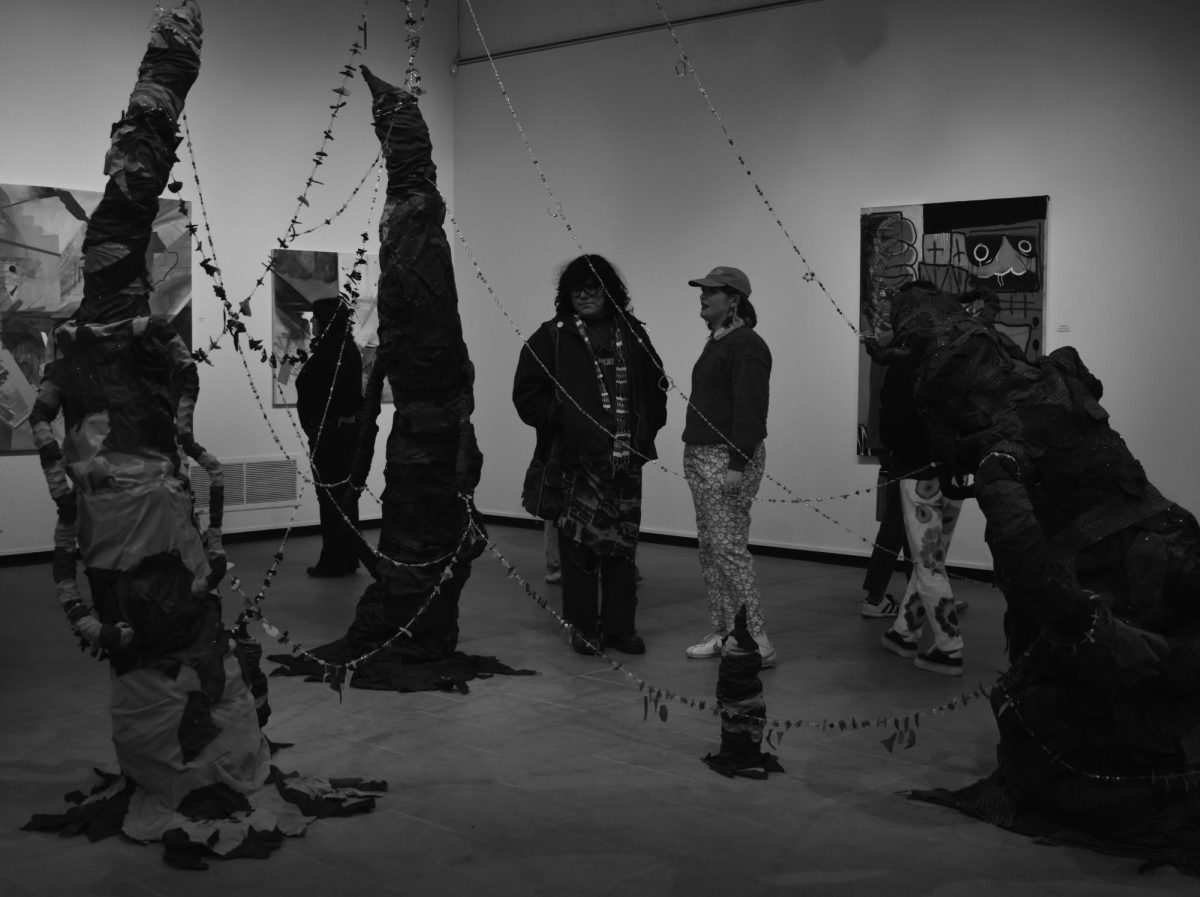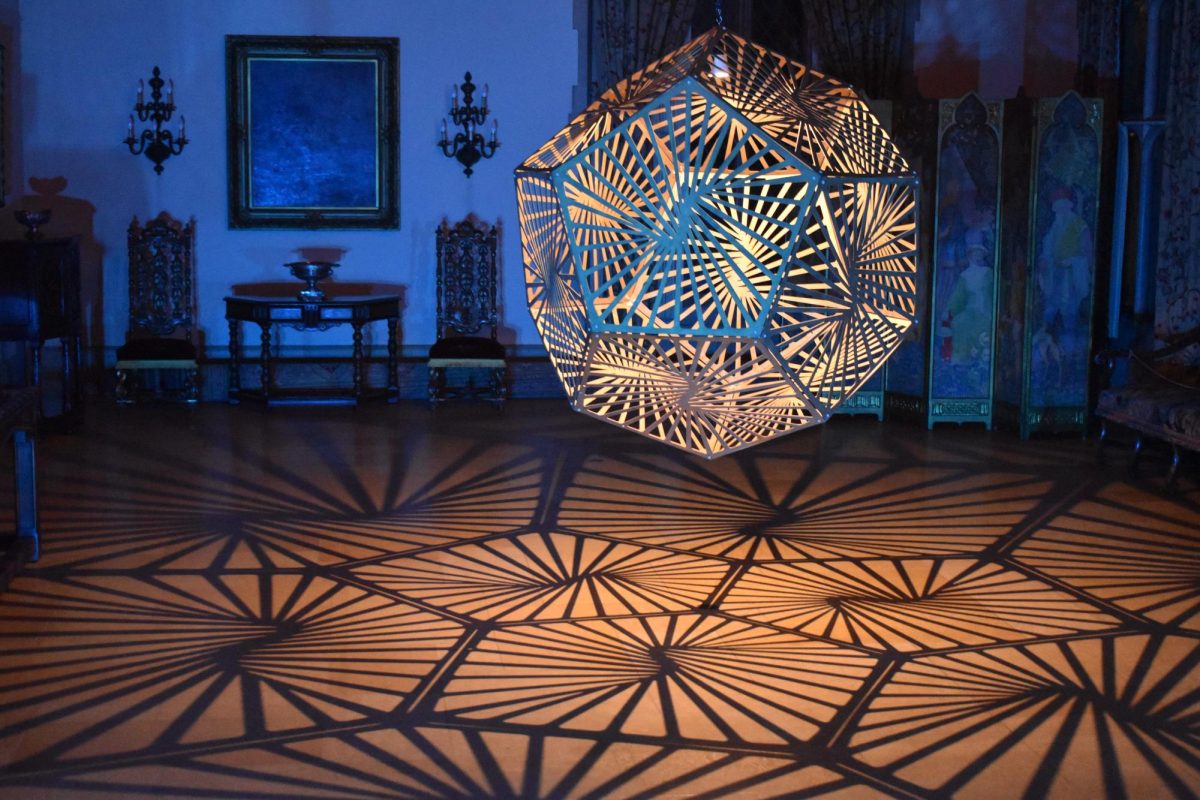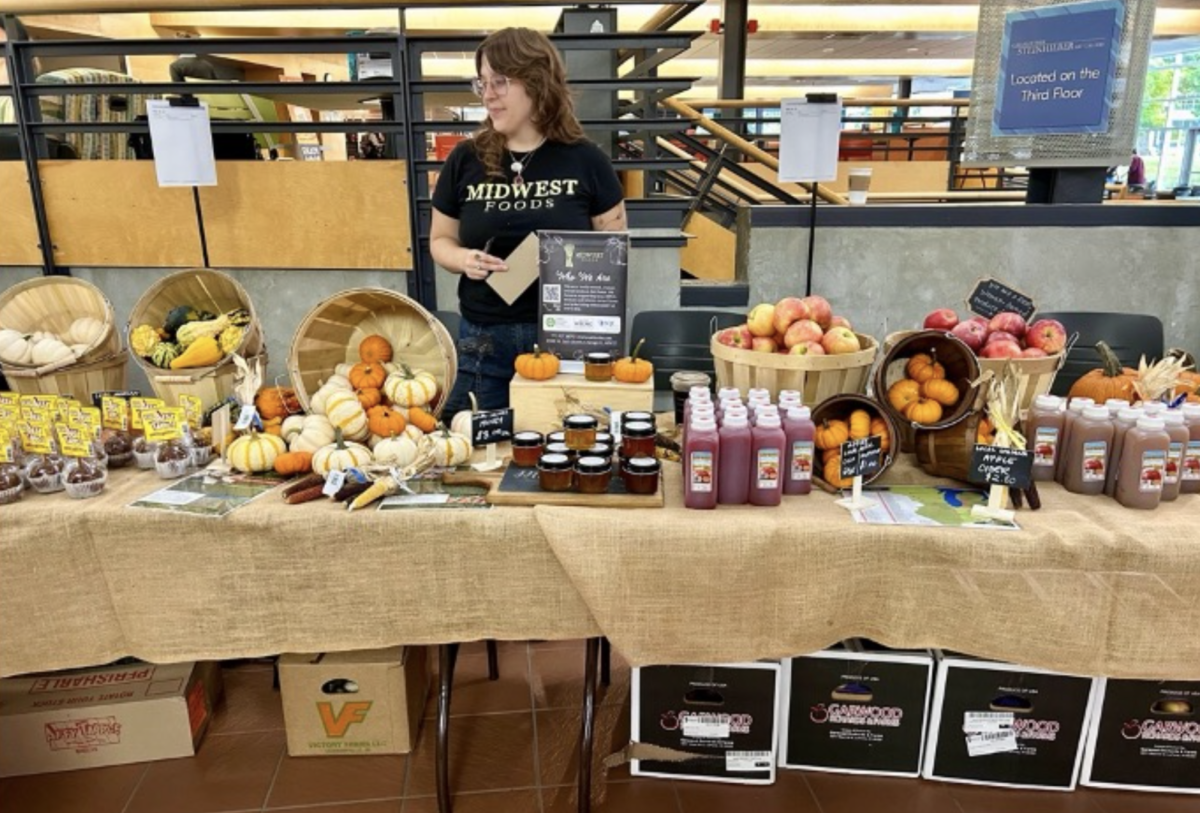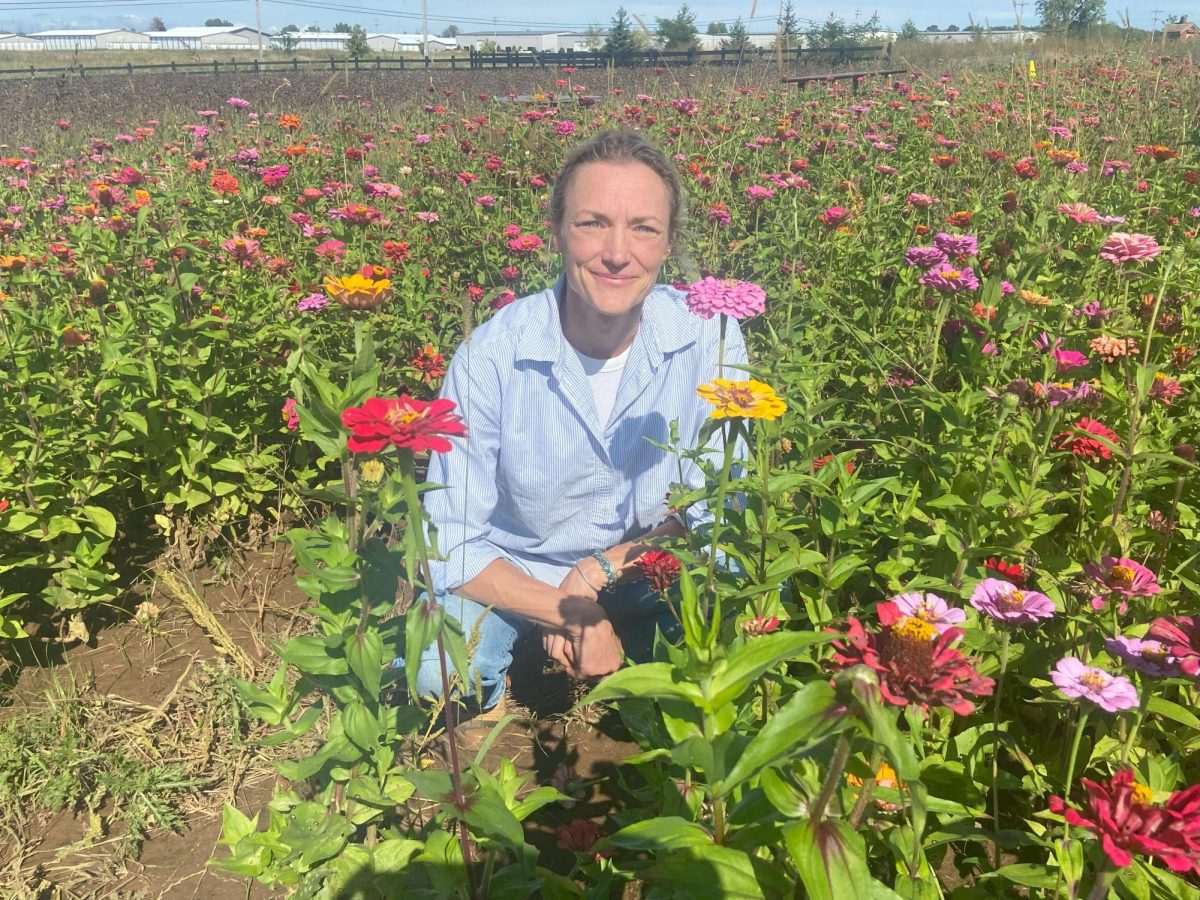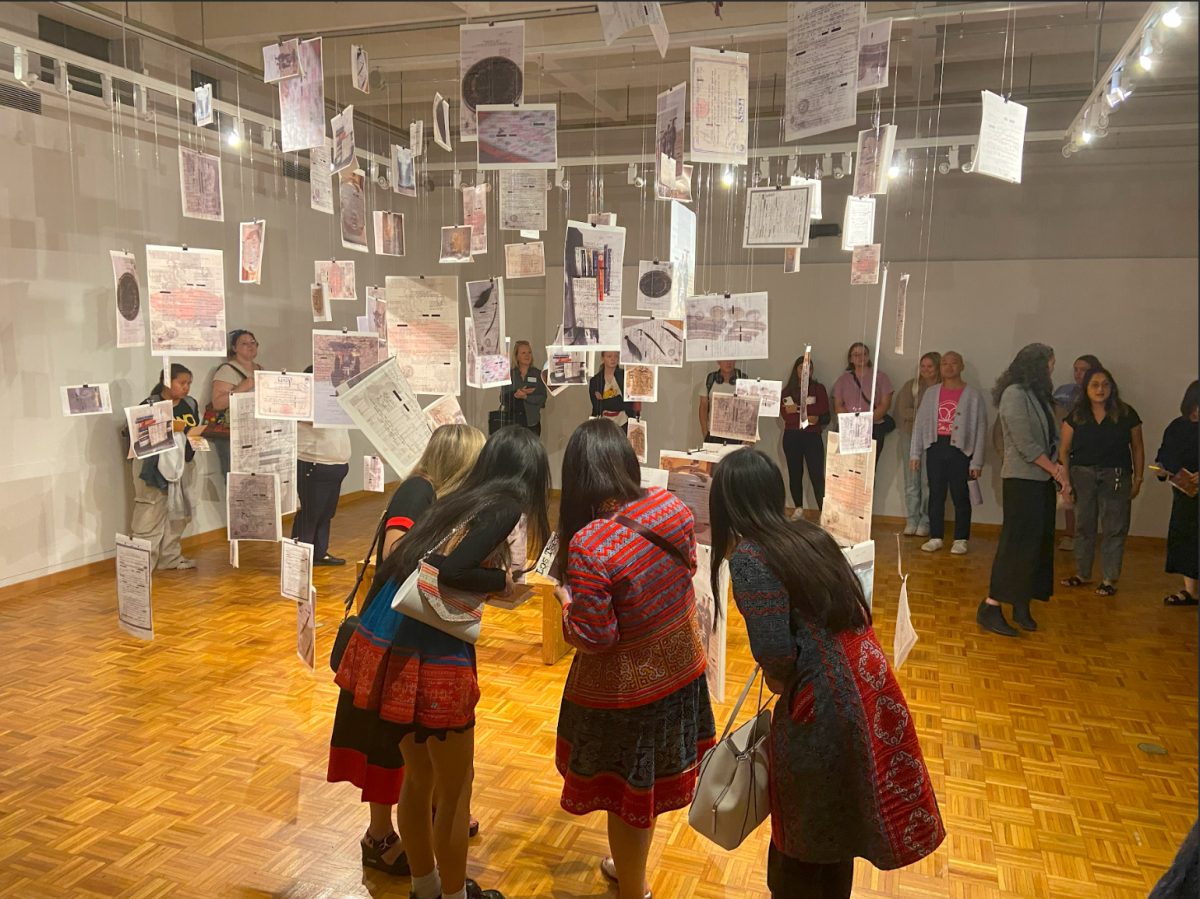The Allen Priebe Gallery’s new exhibition, Bridge Work, opened Feb. 29 and features six different artists’ work: Julia Bradfish, Ellie Garry, Margaret Griffin, Taj Matumbi, Elizabeth Sheeler and Hannah Stevenson.
The six spoke on their transitions as artists and showed some of their past and present works in the Arts and Communications building on the opening day.
Bridge Work and Plum Blossom Initiative are seeking out recently graduated students with a bachelor’s degree in arts (BA) or fine arts (BFA) and trying to help them develop professionally. All six of these artists are just within a few years into professional work after college.
Bradfish
She received her BFA from the University of Wisconsin-Milwaukee and focuses on painting and drawing. Bradfish said she discovered a love for collages so she paints very abstract collage art.
“I started off very detail-based,” Bradfish said. “I loved to show off my technical abilities, but then I realized and a lot of my instructors said that’s why the camera is made’’ So I had to rethink how I wanted to express myself as an artist, and I started to collage.”
She plays with color, texture, line weight, opacities and different shapes in all of her works to edit the more refined drawing work into a new piece with paint.
As Bradfish continued her craft she began to stray further and further away from the reference.
“For the Bridge Work work I wanted to try something new and explore the 3D realm instead of sticking to that 2D reference,” she said.
Garry:
Garry graduated from the Milwaukee Institute l of Art and Design (MIAD), but before going to college, she was strictly a photographer.
“[Photography’s] something that’s always going to be my first impulse in my practice,” she said. “It’s the way I see the world and I like to have that close relationship looking at very specific moments.”
Over her time at MIAD she made a switch to art that allowed her to work with her hands and got into soft sculpture with a piece titled Boa worm.
[Boa worm] was my first dabling into that world of soft sculpture,” she said. “Trying to show that idea of comfort … with a snake-like creature.”
Mixing soft pieces with harder pieces was an important change Garry made to her art. She mainly joined metal from welding into art with fabrics, showcasing that work in a senior showing titled Echo Bloom.
“I really like to show both the hard and the soft aspects of life,” she said. “And how they both have to exist together and show that appreciation for both. I like to think of my sculptures as beings and representations of myself.”
Griffin
Griffin also attended MIAD and her art in Bridge Work is titled Body X Industry. It focuses on how the body and industrial work sites work together.
Griffin’s inspiration is from her dad and the blue-collar job that she watched him go to everyday.
“I began to think about what are these materials that I really like that are super inspired by my relationship with him and my interest in his work.”
She wanted to focus now on bringing in softness to compliment her rigid figures that represent the dangerous zones.
“I began thinking about how do I break down these industrious materials and reorder them in a way that fits into our position, as being vulnerable and at-risk figures,” Griffin said.
This thought process and her job working at Kohler Co. led her to her art for Bridge Work, which is an iron piece of two molded work gloves.
“I had the opportunity of being an artist’s assistant to Nirmal Raja at the Kohler headquarters in Chicago in their cast iron devison,” she said. “And I had the opportunity to make pieces as well.”
Matumbi
Matumbi earned his BFA in painting and ceramics from Southeast Iowa School of Art. Most of the art making was process based and less about preconceived concepts.
The abstract boot series is where he ended undergraduate school with his own premade stencils, which he used in almost every piece.
“Those [stencils] were my visual vocabulary and when I got to grad school my professor said ‘you need to break away from that and stop using them’ so I started integrating things from my childhood,” Matumbi said.
After taking an African American history course, Matumbi started drawing inspiration from his past and from many different artists.
“I started thinking about my history as a biracial person and my [ideas] from African American painters,” he said. “Thinking of children from the Jim Crow era and how Black children were treated from the 1800s up until now and the parallels. The idea of black magic and African Americans being viewed historically as mischievous are all types of things I think about in my work.”
During the COVID lockdown he began drawing more and created work for his thesis show titled “Self Portrait Between Parallel Planes.”
“[The drawings] get at the idea of being a person of color in mostly white environments and the code switching you have to do,” Matumbi said.
Sheeler
Sheeler is a blind artist and attended the Louisiana Center for the Blind a few years ago. She said the center gave her the confidence she needed to continue her art.
“Before I went to this training center I had made work that had talked about my blindness, but I was really insecure about my blindness,” she said.
Sheeler was dropped off at an unknown location 30 miles away from the center and was told to find her way back using the rest of her senses and she did just that.
“This experience was one of the big moments I had at the training center that made me realize that my blindness wasn’t such a hindrance,” she said.
The artwork Sheeler has in the Bridge Work show is a composition of the traffic at the intersection she listened to, to find her way back to the center.
“I wanted an intersection that was personal to that experience, so I actually went to Louisiana and recorded the intersection of one of the [defining] moments to that experience,” she said.
Stevenson
Stevenson’s art collection in Bridge Work is “Object of Desire.” It’s inspired by the relationship between women and cats.
Stevenson came from a small town in Michigan and she said being surrounded by narrow-mindedness is what led her to create the art she makes now. She used to create pretty art that she was uninspired by and had it shown in the Michigan Legislature.
“It was at that moment that I realized that no amount of external validation that I would get from this body of work would make me feel fulfilled, and that I needed to make a shift,” she said.
The most important thing that led to Stevenson changing the trajectory of her work was getting her cat.
“Having a cat made me think about the relationship between cats and women, both linguistically especially with female genitalia and with stereotypes like the crazy cat lady,” she said.
She takes cat hair and her love for quilting and sewing and combines the two into artwork to make an impactful art piece.
The Bridge Work exhibit featuring the six artists will be on display until March 21.


